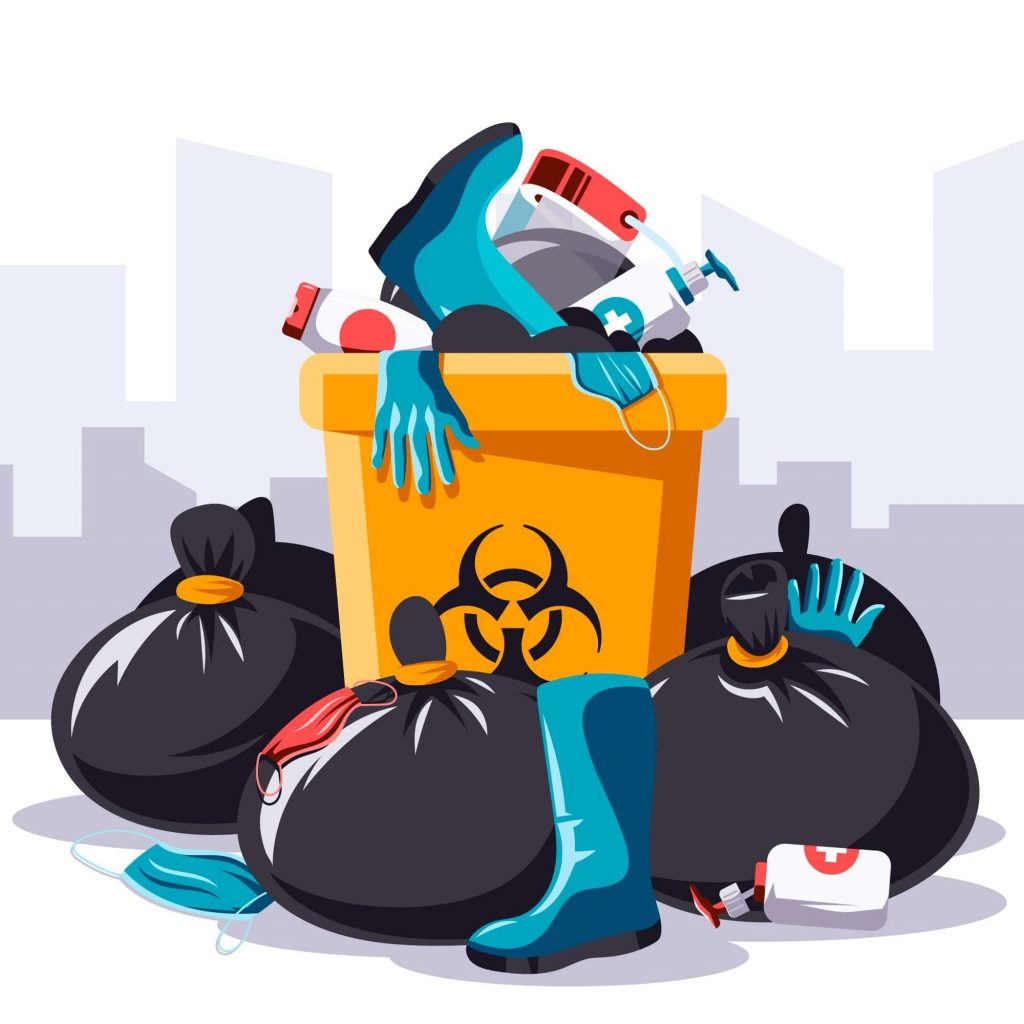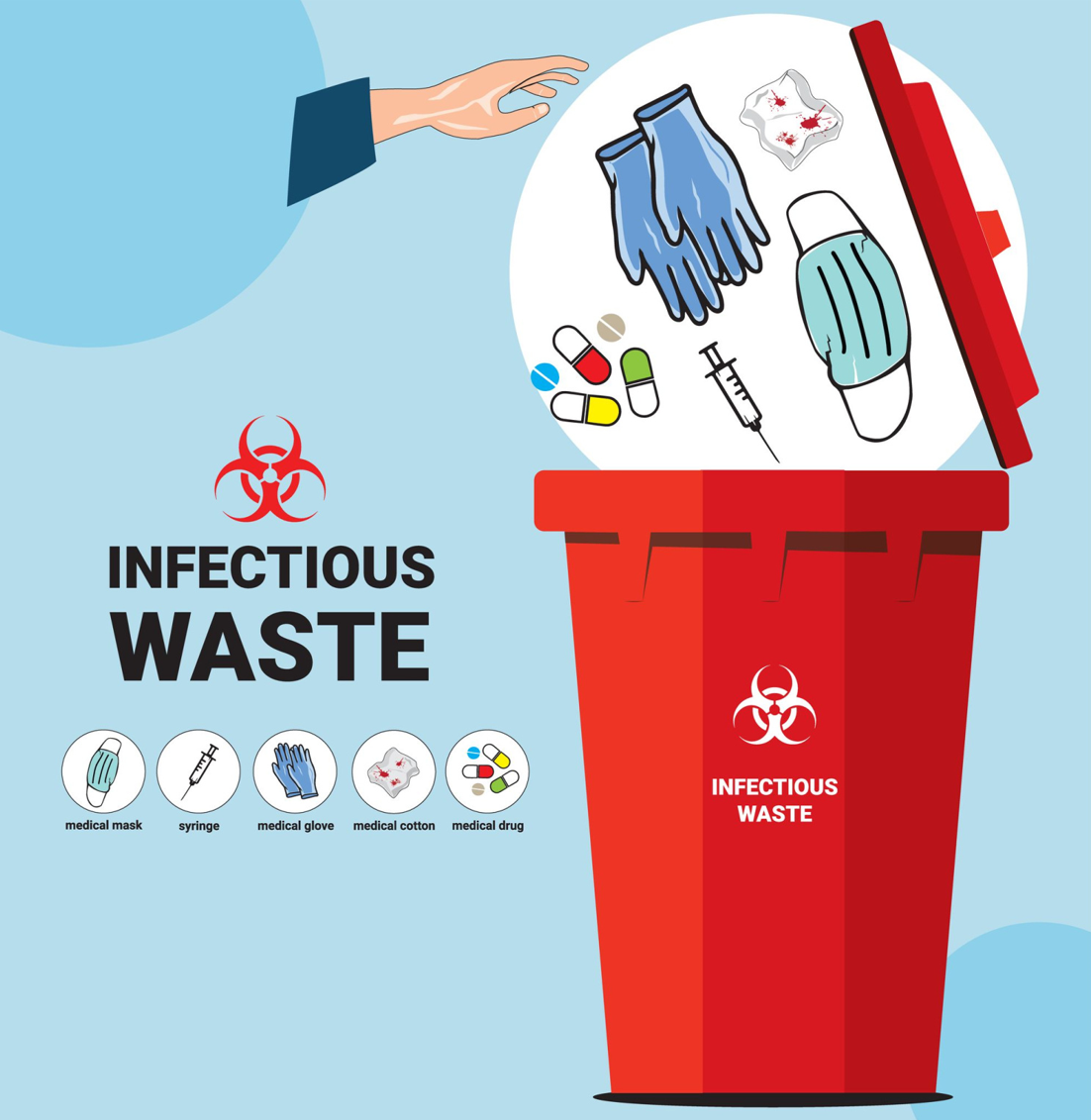Expert Medical Waste Disposal Service: Protecting Your Facility and Neighborhood
Wiki Article
Ideal Practices for Medical Waste Management
Clinical waste administration is an essential aspect of medical care facilities' procedures to guarantee the safety of clients, personnel, and the atmosphere. Carrying out finest methods in clinical waste management is important to lessen the risks connected with contaminated materials. This includes appropriate segregation and categorization of waste, guaranteeing its secure storage space and labeling, adhering to regulative standards, and making use of effective disposal techniques. By complying with these best methods, medical care centers can lower the capacity for infections, injuries, and air pollution triggered by improper handling and disposal of medical waste. This introduction aims to provide a summary of the importance of best methods for medical waste management and the subsequent sections will explore each practice in detail - medical waste removal.
Segregation and Categorization
In the field of medical waste management, proper partition and classification are essential practices for ensuring the safe and reliable disposal of healthcare-related materials. Medical waste is generated from various resources, including healthcare facilities, centers, labs, and other medical care facilities. It contains a variety of items, such as needles, syringes, bandages, gloves, and pharmaceutical waste.Segregation includes the organized splitting up of various kinds of medical waste based on their attributes and potential dangers. Sharps waste, such as blades and needles, ought to be put in puncture-resistant containers to prevent injuries and the spread of contagious conditions.
Classification is the process of categorizing medical waste into different classifications based on its prospective risks. These classifications might include contagious waste, harmful waste, pharmaceutical waste, and general waste. By categorizing waste, medical care facilities can determine the suitable disposal methods and make certain compliance with neighborhood policies and guidelines.
Proper segregation and categorization of clinical waste not only protect the health and wellness of health care workers and the general public yet likewise add to the general performance and efficiency of waste management. It minimizes the danger of accidents, minimizes environmental influences, and advertises liable waste disposal methods.
Proper Storage and Labeling
To guarantee the risk-free and efficient disposal of medical waste, health care centers have to stick to appropriate storage space and labeling techniques. WasteX Medical Waste Disposal. Appropriate storage and labeling play an important role in preserving the stability of clinical waste administration systems and safeguarding the health and wellness of medical care workers, patients, and the publicWhen it pertains to storage, it is necessary to have designated locations specifically made for different sorts of clinical waste. These areas must be secure, well-ventilated, and equipped with suitable containers that fulfill regulatory criteria (medical waste removal service). Partition and classification of waste should likewise be taken into account to stay clear of cross-contamination and potential risks

Normal surveillance and examination of storage space areas and containers are necessary to recognize any kind of concerns or offenses. Personnel ought to be trained on proper storage space and labeling techniques, stressing the importance of conformity with protocols and policies.
Safe Transport and Handling
Making certain the appropriate and protected transportation and handling of clinical waste is critical for maintaining the integrity of waste management systems and guarding the health and wellness and safety and security of all involved. Clinical waste, which includes things contaminated with transmittable materials, drugs, and other unsafe compounds, must be transferred in a fashion that protects against leakages, spills, and prospective contamination.It is necessary to utilize watertight and puncture-resistant containers that are particularly designed for medical waste. Additionally, waste should be set apart based on its nature and kind to prevent cross-contamination.
Throughout transport, it is very important to make sure that waste containers are safely secured and saved in a steady fashion. Cars utilized for transporting medical waste ought to be outfitted with proper safety and security attributes, such as spill control systems, to decrease the risk of any kind of leakages or spills. Drivers must obtain training on appropriate handling and emergency feedback procedures to successfully address any kind of unanticipated cases.
In addition, the transport and handling of clinical waste should follow all relevant guidelines and guidelines stated by local, state, and federal authorities. WasteX Medical Waste Disposal. medical waste disposal. Normal evaluations and audits must be conducted to evaluate compliance and identify any type of areas for improvement
Conformity With Regulatory Guidelines
Maintaining conformity with regulatory guidelines is necessary for effective clinical waste management. These standards are put in area to secure public wellness and the environment by making sure that clinical waste is effectively managed, treated, and disposed of. Conformity with governing guidelines aids to protect against the spread of contagious illness, reduce prospective hazards, and lower the general impact of medical waste on the environment.To attain conformity, medical care facilities have to remain notified concerning the details policies regulating clinical waste administration in their jurisdiction. These policies may differ from country to country, and even within different states or regions. It is essential for health care centers to have an extensive understanding of these guidelines and to implement ideal approaches and methods to ensure compliance.
One trick aspect of compliance is the proper segregation and labeling of various kinds of clinical waste. This consists of separating sharps from other waste, along with classifying waste based upon its possible dangers. Healthcare facilities need to also guarantee that clinical waste is saved in appropriate containers and that these containers are correctly labeled and sealed.
Additionally, compliance with regulatory standards needs health care facilities to establish appropriate training and education and learning programs for employee entailed in medical waste administration. This includes offering training on waste segregation, dealing with, and disposal treatments, along with the correct use individual protective devices.
Normal tracking and anonymous audits are additionally vital to guarantee ongoing compliance with regulative standards. This involves carrying out regular evaluations of waste storage locations, recording waste monitoring procedures, and maintaining documents of garbage disposal.
Effective Disposal Methods
Medical care facilities must employ efficient disposal approaches for correct monitoring of medical waste. Improper disposal of clinical waste can position serious wellness and ecological risks. There are numerous techniques that can be made use of to properly get rid of medical waste, making certain the security of healthcare workers, patients, and the public.One typically made use of technique is incineration. Incinerators can safely melt clinical waste at high temperatures, reducing the quantity and damaging any possibly unsafe microorganisms. Incineration can be costly and might launch hazardous contaminants into the air if not appropriately regulated.
Another approach is autoclaving, which involves subjecting the waste to high-pressure vapor. This process kills bacteria, infections, and other microbes, rendering the waste risk-free for disposal in regular waste streams. Autoclaving is a eco friendly and effective technique, yet it requires specialized tools and skilled employees.
Chemical disinfection is also utilized sometimes, where liquid chemicals are used to the waste to disinfect it. This technique is much less typically utilized as a result of worries concerning the effectiveness of chemical disinfection and the capacity for chemical deposits to contaminate the atmosphere.
In enhancement to these approaches, healthcare facilities should likewise carry out correct partition, product packaging, and labeling of clinical waste to guarantee its secure handling and disposal. Regular training and education of personnel on correct waste management practices are vital to keeping effective disposal techniques.
Final Thought
Finally, applying finest techniques for clinical waste monitoring is essential for making sure the safety and security of medical care employees, people, and the setting. By correctly categorizing and segregating waste, storing and classifying it correctly, guaranteeing risk-free transport and handling, abiding by governing standards, and utilizing efficient disposal techniques, health care facilities can efficiently manage and minimize the threats linked with clinical waste. It is vital for medical care companies to adhere and prioritize to these best practices to maintain a risk-free and lasting healthcare setting.Medical waste management is an important facet of medical care facilities' procedures to guarantee the safety and security of individuals, personnel, and the environment. Implementing ideal methods in medical waste monitoring is vital to decrease the dangers associated with harmful waste. These classifications might consist of transmittable waste, unsafe waste, pharmaceutical waste, and general waste.In verdict, applying ideal methods for clinical waste administration is essential for making certain the safety and security of healthcare employees, patients, and the setting. By effectively categorizing and setting apart waste, storing and classifying it correctly, ensuring secure transportation and handling, abiding with regulatory guidelines, and using effective disposal approaches, health care centers can properly handle and minimize the dangers linked with clinical waste.
Report this wiki page